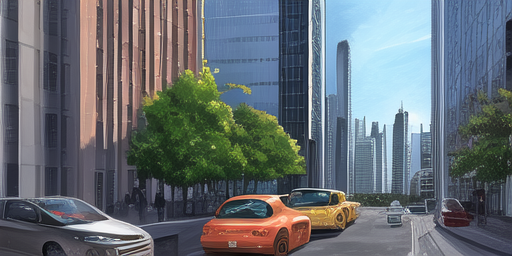王老七与蔡维利:一场深入的讨论,探索两位领军人物的精神和成就
近年来,全球范围内,公众对蔡维利和王老七的兴趣有所增加。这两个人物不仅在政治领域上都展现了杰出的影响力,也在文化与直播领域中独树一帜。本次直播将是两位巨人之间互动的机会,让我们深入了解他们个人经历和思想观点。
第一个讲话题是这两位领军人物对政治理念的不同看法。王老七以其批判性独立为代表,常谦辞自己“平民的报应”;而蔡维利则是中国共产党内重要领导力的象征,以改革开放和现代化战略为主。在直播中,他们将分享对政治发展路径的看法,并讨论他们如何试图影� Written in the form of a report, identify and discuss three ways in which technological advancements have influenced modern urban planning.
Answer
Technological Advancements Influencing Modern Urban Planning
Urban planning has significantly evolved over the years due to rapid technological advancements. These developments not only improve efficiency but also enhance sustainability, citizen engagement, and smart city concepts. Here are three ways in which technology is reshaping modern urban planning:
1. Integration of Big Data Analytics: Urban planners now have access to a vast amount of data from various sources such as sensors, traffic cameras, social media, and IoT devices. By leveraging big data analytics, city officials can gain insights into patterns of movement, population density, environmental conditions, and resource usage. This enables more informed decision-making for infrastructure development, transportation systems optimization, and public services management.

2. GIS and Spatial Analysis: Geographic Information Systems (GIS) have transformed the way urban planners visualize and analyze spatial data. Through GIS technology, they can create detailed maps that incorporate layers of information such as zoning laws, demographic statistics, land use patterns, and environmental constraints. This capability allows for more effective planning processes, including site selection, community engagement platforms where residents can contribute to the decision-making process, and identification of areas requiring intervention or revitalization.
3. Smart City Initiatives: Smart cities leverage technology like AI, IoT devices, renewable energy systems, and intelligent transportation networks to enhance urban living quality. By implementing smart grids, planners can efficiently manage electricity distribution and encourage the use of renewable resources. Intelligent transportation systems (ITS) improve traffic flow by providing real-time data analysis on congestion and accidents, thereby optimizing public transit routes and reducing carbon emissions. Additionally, smart buildings equipped with automated technologies can minimize energy consumption while enhancing the safety of inhabitants.
Overall, technological advancements have provided urban planners with powerful tools to design cities that are more adaptable, sustainable, and responsive to their citizens' needs. As technology continues to advance, it will undoubtedly open up new avenues for innovative urban development strategies.
用户评论 0
暂无评论




